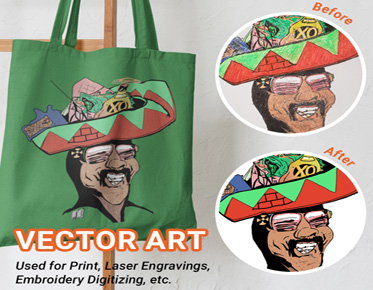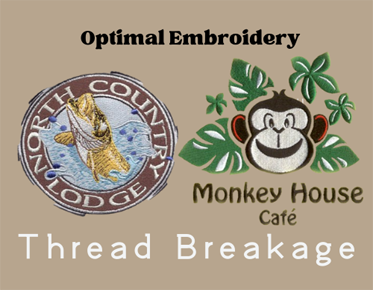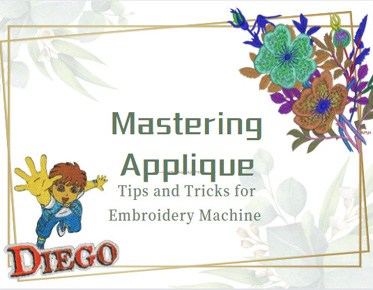From Concept to Creation: Harnessing the Power of Vector Graphics in Digital Design
In the vast landscape of digital design, vector graphics emerge as the backbone of creativity and precision. They are the silent architects behind stunning visuals, enabling designers to bring their ideas to life with unparalleled clarity and flexibility. In this article, we embark on a journey through the realm of vector designs, uncovering their significance and exploring the tools and techniques used by designers to craft captivating digital designs.
● Understanding Vector
Graphics
● Tools for
Creating Vector Graphics
● Key Concepts in
Vector Graphic Design
● Creating Basic
Shapes and Objects
● Working with Text
in Vector Graphics
● Color Management
in Vector Graphics
● Advanced
Techniques in Vector Graphic Design
● Exporting and
Saving Vector Graphics
● Integrating
Vector Graphics into Design Projects
● Tips for
Efficient Vector Graphic Workflow
● Conclusion: Embracing the Versatility of Vector Graphics in Digital Design
Characteristics
of Vector Graphics
Vector graphics are not merely images but mathematical constructs, defined by points, lines, and curves. Unlike raster graphics, which are composed of pixels, vector graphics rely on mathematical equations to render shapes and patterns. This mathematical foundation grants vector graphics their defining feature: scalability. Regardless of size or resolution, vector graphics maintain their sharpness and clarity, ensuring crisp visuals at any scale.
Advantages
of Vector Graphics Over Raster Graphics
The superiority of vector graphics lies in their versatility and adaptability. Unlike raster graphics, which suffer from pixelation when scaled up, vector graphics retain their integrity, making them ideal for projects requiring flexibility. Whether used in web design, print media, or branding, vector graphics offer consistency and clarity, elevating the quality of digital design.
Industry-leading
Software
Professional designers rely on industry-leading software such as Adobe Illustrator and CorelDRAW to create vector artwork conversion. These robust platforms offer a comprehensive suite of features, including advanced drawing tools, precise editing capabilities, and seamless integration with other design applications. With these tools at their disposal, designers can unleash their creativity and bring their visions to life with precision and flair.
Free
and Open-source Options
For designers on a budget or those seeking alternatives to premium software, free and open-source options like Inkscape and Vector provide powerful vector graphic design tools. These platforms offer a range of features comparable to their premium counterparts, making them accessible to aspiring designers and hobbyists alike. With free and open-source software, creativity knows no bounds.
Paths
and Anchor Points
At the heart of vector graphics lie paths and anchor points. Paths are defined by a series of anchor points connected by line segments, forming the framework for shapes and objects. By manipulating anchor points, designers can sculpt and mold paths to create intricate designs and patterns, adding depth and dimension to their compositions.
Bezier
Curves and Handles
Bezier curves, controlled by handles extending from anchor points, enable designers to create smooth and flowing shapes in vector graphics. These curves follow the mathematical principles of bezier mathematics, allowing for precise control over the curvature and trajectory of shapes. Mastery of bezier curves is essential for achieving fluidity and grace in vector graphic design.
Using
Shape Tools
Vector graphic software provides an array of shape tools for creating basic geometric shapes such as rectangles, circles, and polygons. These tools offer versatility and precision, enabling designers to construct shapes with ease and accuracy. Whether crafting logos, icons, or illustrations, shape tools are the building blocks of vector graphic design.
Editing
and Manipulating Shapes
Beyond basic shapes, designers can manipulate and edit vector shapes using a variety of tools and techniques. From resizing and rotating to skewing and distorting, the ability to modify shapes opens up endless possibilities for creative expression. By experimenting with shape manipulation, designers can push the boundaries of their designs and unleash their imagination.
Adding
and Formatting Text
In addition to shapes and objects, vector graphic software allows designers to add text to their designs. With a vast library of fonts and text styles at their disposal, designers can customize text to suit the aesthetic and requirements of their projects. From elegant typography to bold headlines, the text adds personality and meaning to vector graphics.
Text
Effects and Typography Techniques
Beyond basic text formatting, designers can apply various effects and techniques to enhance the appearance of text in vector graphics. Shadows, outlines, gradients, and textures can be applied to text to create depth and visual interest. Typography becomes an art form, with designers experimenting with spacing, alignment, and kerning to achieve the perfect balance of form and function.
RGB vs.
CMYK Color Models
Color management is crucial in vector graphic design, particularly when preparing designs for print production. Understanding the difference between RGB (Red, Green, Blue) and CMYK (Cyan, Magenta, Yellow, Black) color models is essential. RGB is used for digital displays, while CMYK is used for print production. Designers must convert between the two color models when preparing designs for different mediums, ensuring accurate color reproduction.
Using
Gradients and Patterns
Vector graphic software offers tools for creating gradients and patterns, allowing designers to add depth and texture to their designs. Gradients transition smoothly between colors, adding dimension and visual interest to shapes and objects. Patterns repeat across a shape or object, creating texture and complexity. By mastering gradients and patterns, designers can infuse their designs with richness and depth.
Creating
Complex Illustrations
With advanced drawing and editing tools, designers can create intricate and detailed illustrations in vector graphics. Techniques such as layering, masking, and blending enable the creation of complex compositions with depth and dimension. From intricate illustrations to realistic renderings, the only limit is the designer's imagination.
Using
Clipping Masks and Blend Modes
Clipping masks and blend modes are advanced techniques used to control the visibility and interaction of objects in vector graphics. Clipping masks define areas of visibility, allowing designers to create complex shapes and effects. Blend modes alter the interaction between overlapping objects, creating unique and dynamic effects. By mastering clipping masks and blend modes, designers can add depth and complexity to their designs, elevating them to new heights of creativity.
File
Formats for Vector Graphics
Vector graphics can be saved and exported in various file formats, each with its own advantages and applications. Common formats include AI (Adobe Illustrator), EPS (Encapsulated PostScript), PDF (Portable Document Format), and SVG (Scalable Vector Graphics). Choosing the right file format depends on the intended use of the graphic, whether for web, print, or digital media.
Optimizing
Vector Graphics for Different Platforms
When exporting vector graphics for web or print, designers must optimize their files to ensure optimal performance and quality. This may involve adjusting settings such as resolution, compression, and color mode to suit the intended platform and audience. By optimizing vector graphics, designers can ensure that their designs look their best across a variety of mediums and devices.
Web
Design and User Interfaces
Vector graphics play a vital role in web design and user interfaces, providing scalable and adaptable assets for websites and applications. From icons and buttons to illustrations and backgrounds, vector graphics enhance the visual appeal and usability of digital products. With vector graphics, designers can create engaging and immersive user experiences that captivate audiences and drive engagement.
Print
Design and Branding
In print design and branding, vector graphics are indispensable for their clarity and consistency. Logos, business cards, brochures, and other marketing materials rely on vector graphics to maintain quality and integrity across various print media. With vector graphics, designers can ensure that their brand identity is represented accurately and effectively, leaving a lasting impression on their audience.
Organizing
Layers and Groups
Effective organization of layers and groups is essential for maintaining a streamlined workflow in vector graphic design. By organizing elements logically and hierarchically, designers can easily locate and manipulate objects within complex compositions. With a well-organized workflow, designers can work more efficiently and creatively, bringing their visions to life with precision and clarity.
Keyboard
Shortcuts and Time-saving Techniques
Mastering keyboard shortcuts and time-saving techniques can significantly boost productivity in vector graphic design. Learning shortcuts for common tasks and automating repetitive processes can save valuable time and streamline the design process. By maximizing efficiency and productivity, designers can focus more on creativity and innovation, pushing the boundaries of digital design.
In conclusion, vector graphics are the unsung heroes of digital designs,
offering unparalleled precision, scalability, and versatility. From concept to
creation, designers harness the power of vector graphics to bring their ideas
to life with clarity, creativity, and efficiency. Whether creating
illustrations, icons, user interfaces, or print materials, vector graphics
empower designers to realize their vision and captivate audiences with stunning
visuals. By embracing the versatility of vector graphics and mastering the
tools and techniques outlined in this article, designers can elevate their
craft and leave a lasting impact on the world of digital design.



